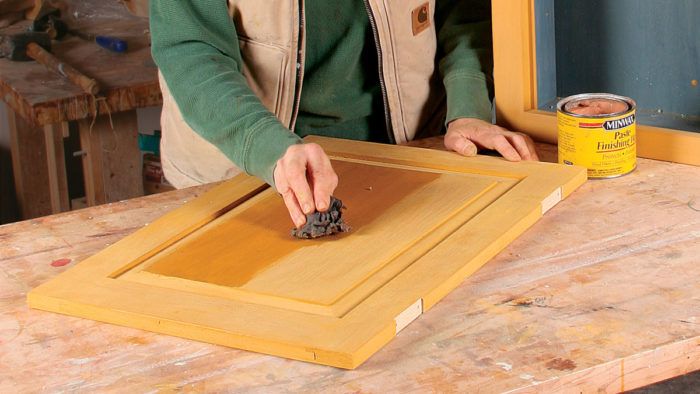Rediscovering Milk Paint
Get a rich, traditional look or break out of the bag for a wide range of effects.

Synopsis: It’s durable and versatile, it comes in a variety of colors, and it contains no toxic ingredients. It’s no wonder that milk paint, one of the world’s oldest decorative coatings, is enjoying a new burst of popularity. While makers of Shaker and Colonial reproductions are familiar with milk paint, the unique effects possible with this finish have also captured the interest of those who make period and contemporary pieces. Nancy Hiller demonstrates how easy it is to mix and apply milk paint to achieve an opaque finish, color washes, layering effects, and other looks.
Milk paint has been around at least 20,000 years. the Egyptians used it, and it has been found decorating ancient cave dwellings. Woodworkers who specialize in Colonial and Shaker furniture are familiar with it, as milk paint was a common finish on both types of furniture. But milk paint offers interesting possibilities for all woodworkers, from makers of period reproductions to those who prefer contemporary furniture and cabinetry. And it contains no toxic ingredients. this durable and versatile finish comes in a variety of colors and can be used with different topcoat treatments to create unique effects. opaque surfaces, color washes, layering, and decorative painting are just the beginning.
Many woodworkers are reluctant to try milk paint, concerned that it may be difficult to use. Nothing could be further from the truth. this finish is so easy to mix and apply that you can’t mess it up, and slight imperfections will only enhance the finished look.

What is milk paint?
Milk paint’s durability comes from its ingredients. Casein, a protein found in milk, is extremely hard when dry and adheres to a variety of substrates, including solid woods, plywood, and medium-density fiberboard (MDF). Manufacturers mix casein with lime. When combined with water, the lime and casein react to form a natural coating that cures over time, somewhat like concrete. If you want to apply milk paint over some other type of finish, be sure to follow the manufacturer’s instructions. You’ll usually have to scuff up the existing finish with sandpaper, and then clean the surface with water or vinegar and water. Finally, use a bonding agent (supplied by milk-paint manufacturers) mixed in with the water and powder of the first coat when refinishing.
Supplied as a dry powder, milk paint has a limited shelf life once it is mixed with water, so you should make up only as much as you can use in a day. Unused powder, however, can be stored indefinitely in an airtight, sealed container. Moisture makes the powder unusable, so the trick is to keep out humidity. You can purchase many different colors. The paint dries lighter than it looks when it’s wet, so test colors on scraps.
 From Fine Woodworking #199
From Fine Woodworking #199
For the full article, download the PDF below:
Fine Woodworking Recommended Products

Diablo ‘SandNet’ Sanding Discs


Waterlox Original








Log in or create an account to post a comment.
Sign up Log in